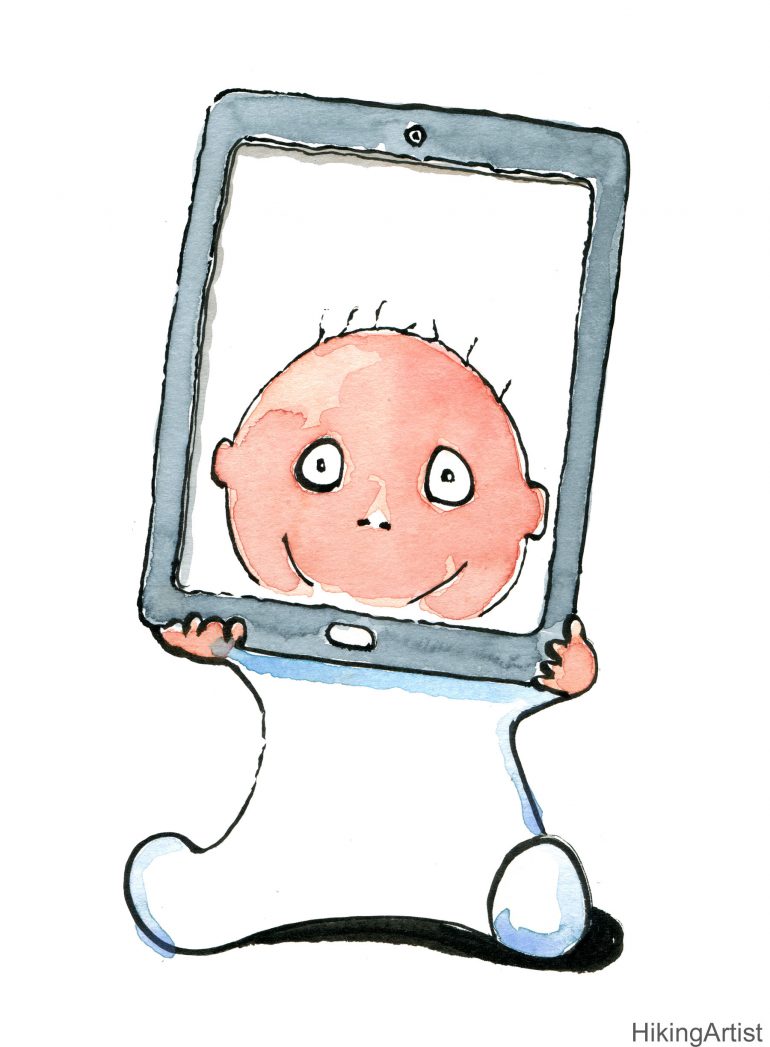In 2001, Marc Prensky’s paper ‘Digital Natives, Digital Immigrants’ burst onto the education scene with a metaphor that managed to put into words what a lot of people felt. Namely, that today’s students, having grown up surrounded by digital technologies, were somehow different to those who had not. These students, the ‘net-generation’, were ‘native speakers’ of the digital language of computers, video games and the Internet. In contrast, those not born into the digital world (aka older people) were ‘digital immigrants’ who acquired the language of the digital world like a second language. Though digital immigrants could master the language they were increasingly stuck with odd accents, mispronunciations and grammatical slip-ups that sounded odd to the native ear. The problem with education, so the paper went, was that digital immigrant instructors were speaking an outdated language from the pre-digital age to teach a population fluent in an entirely other language.
As metaphors go the ‘Digital Native/Digital Immigrant’ concept remains articulate, intuitively compelling, and economic in its explanatory power. The image of a toddler using an iPad and a teenager glued to their phone, fit easily into the narrative of the digital native at large. However, metaphors, though useful can be misleading, especially when imposed wholesale onto entire generations.
The trouble is that in focusing on generational tropes, both individuals and the technology they use are reduced in both their diversity and complexity. It is too easy to stereotype students and assume that familiarity with one kind of technology meant mastery over many, or ignore the very real issues that may face students who may not have had the access, skills or confidence that is assumed of them when they start.
It is too easy to stereotype students and assume that familiarity with one kind of technology meant mastery over many
Since 2001, research in educational technology has gone some way to dispelling the myth of the digital native. Researchers have recognised that, while there has been a cataclysmic shift to the digital world, students’ exposure, experience and comfort in using technology are anything but uniform. Marc Prensky himself has moved on from focusing on generational stereotypes, to focusing on how individuals from all generations make sense of digital culture.
However, what happens inside journals and conferences does not always trickle out into wider conversation. Some myths are hard to dispel, more so when they remain partially true. The digital native myth is similar in many ways to early concepts of ‘learning styles’. The idea that individuals may have ‘visual’, ‘aural’, ‘verbal’ and ‘physical’ styles of learning has been subject to frequent scholarly debunking. However, while early understandings of learning styles were crude they nevertheless gave words and form to something fundamental, namely that individuals will have different motivations, habits, preferences and perspectives that will invariably shape how they learn and see the world. In this sense to say that students who have grown up in a world of ubiquitous computing may be affected by this world is entirely valid. As are debates about the role that technologies play within education. However, thereafter we should be cautious.
Whether we are explicit in referring to students as digital natives or are instead holding more implicit and unchecked bias, it is important to continue to challenge our assumptions on students’ relationships with technology. Simply put, when we use technology in learning and teaching, are we doing it for the right reasons and is there support for students who lack confidence or resources? If we use an app. or a platform is it because it is the best way to support learning or because ‘students like apps’ or ‘Facebook is cool’? The same can be said when we introduce new forms of assessment such as multimedia assignments, blogs and ePortfolios. What support do we provide and what choice do we allow for students who feel anxious outside the bounds of the traditional written essay or report? In asking these questions we are not suggesting a default return to computer free teaching but rather that we continue to scrutinise how we use technology and what will and won’t work for all of our students.
As technological change occurs so quickly, it is easy to look for labels and metaphors that easily explain the changes in the world around us. However, as both students and technologies become more, not less, diverse it is important to continue to check that we are designing our teaching for real students and not the stereotypes we have imagined.






12 Comments